
Black Cardamom
Black Cardamom is a spice common to Asian cuisine. It has a camphor like smell, that is very strong and gives a bitter, smoky, and earthy taste. It is frequently used in flavourful dishes such as curries, braised meat dishes, soups, and even teas. In traditional Chinese medicine, black cardamom is used to treat digestive issues, respiratory ailments, and to alleviate cold symptoms [1].
[1] Abdullah et al. Recent advances in the extraction, chemical composition, therapeutic potential, and delivery of cardamom phytochemicals. Frontiers in Nutrition vol. 9 Preprint at https://doi.org/10.3389/fnut.2022.1024820 (2022).

Black cardamom comes from the seeds of the black cardamom plant, which grows in humid environments in cool damp forests. It can grow up to 5 feet in height and has dark red stems with green leaves. The flowers of the black cardamom plant bud from its rhizome, which is in the roots at the bottom of the plant, right above the ground. Black cardamom has a camphor-like taste that is smoky and earthy.
[2] Black Cardamom - Amomum subulatum | North Carolina Extension Gardener Plant Toolbox. https://plants.ces.ncsu.edu/plants/amomum-subulatum/common-name/black-cardamom/ (2023).

Eelana Surendran
Hello! My name is Eelana, I’m studying Biopharmaceutical Sciences and specializing in Medicinal Chemistry. I've always loved taking pictures of everything, especially the beautiful intricacies of nature. And what better way to learn more about nature than to study it in the lab! In my free time I enjoy looking at the stars and the moon for hours!
My project focuses on characterizing the hydrols produced by black cardamom by GC-MS. I started my 4th year Honours Research Project in Fall 2023 and completed my project in winter 2023.
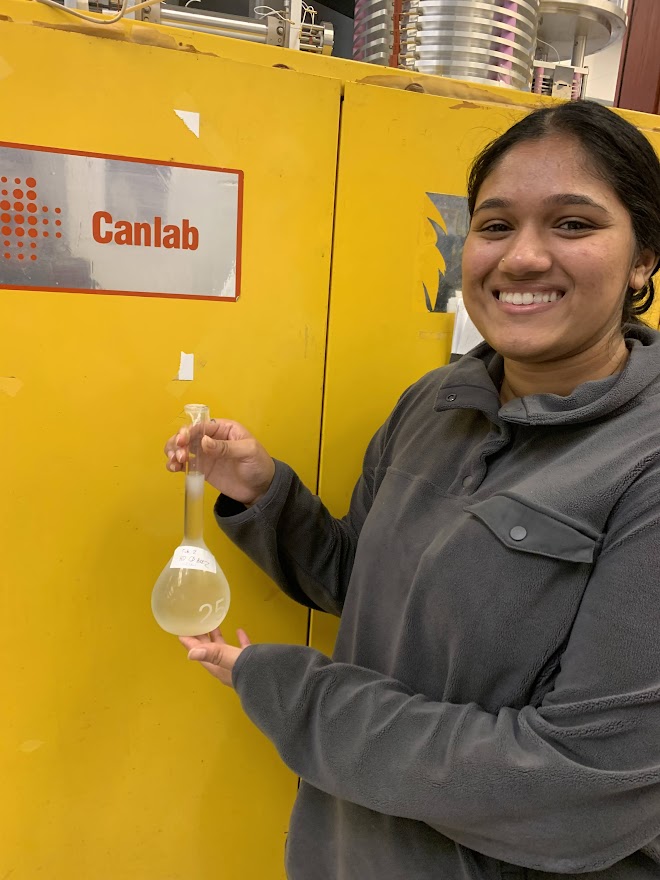
Microwave distillation
Microwave distillation was used in order to distill the black cardamom hydrosol. Microwave distillation is significantly faster than most typical laboratory distillation techniques, requiring only 30-45 minutes. For the microwave distillation of the black cardamom, ice cones were prepared by pouring de-ionized water into an ice cone mold. A screw is placed into the mold top and the top is placed such that the bottom of the screw will freeze directly into the water and the top of the screw is sticking out. Three of these were prepared and left to sit in the freezer overnight. On the same day, 200g of dried cardamom pods were ground into a coarse powder using a clean coffee grinder. The powder was then transferred to the glass microwave vessel along with 500mL of de-ionized water and the newly formed sludge was left to soak overnight. The next day, if the sludge had dried, 100mL of de-ionized water was mixed in. Next, a 400mL beaker was placed into the vessel at the center and one of the ice cones was screwed to the inside of the lid of the vessel. The vessel was then placed into the microwave along with a mug filled with cold water to absorb some of the microwaves. The microwave was then run on high power for 9 minutes to produce hydrosol. The beaker containing the hydrosol was poured into a volumetric flask then reinserted into the vessel. A new ice cone was fitted and the process was repeated twice more.
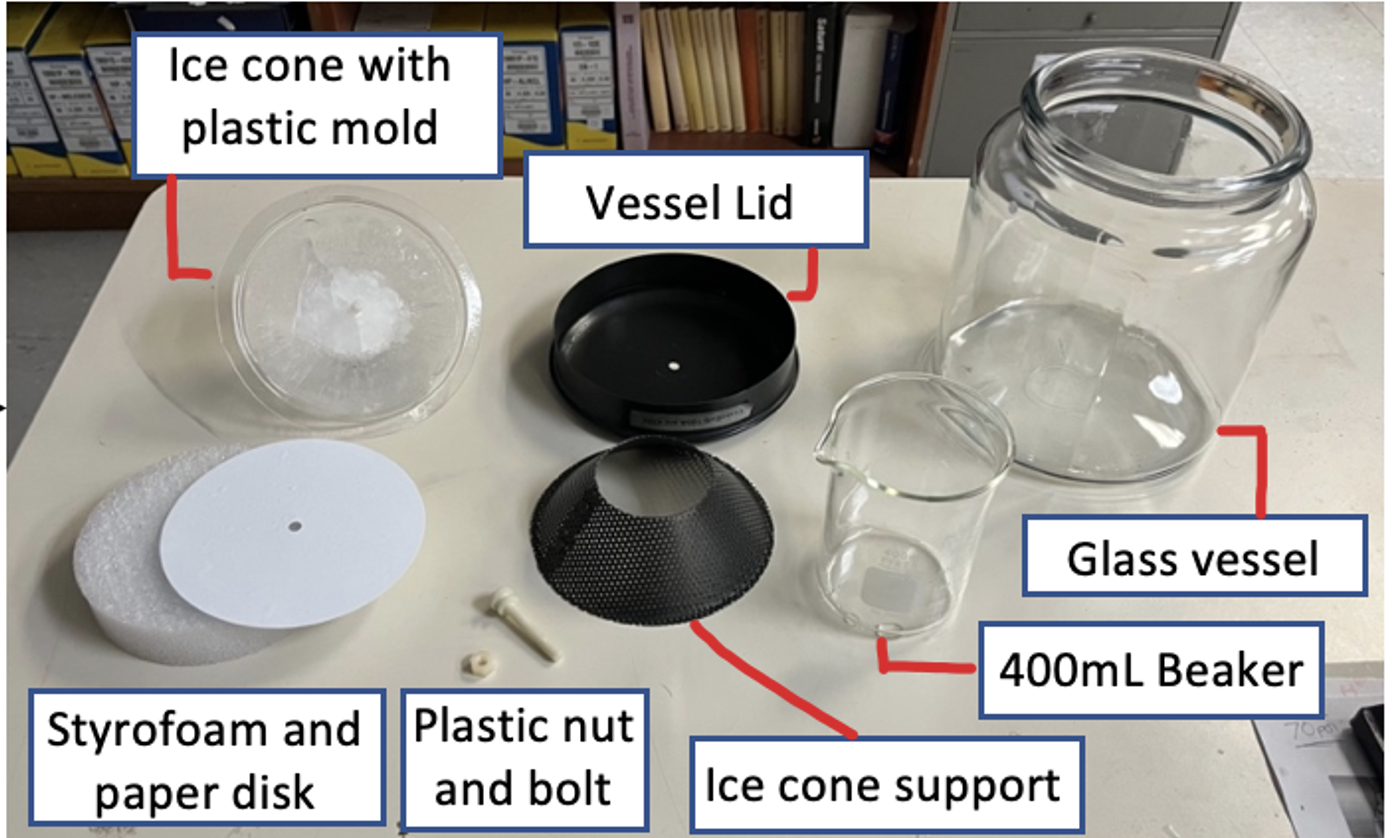
Hydro Distillation
Similar to mass distillation methods, this technique allows for the slow vaporisation of the volatile compounds in soaked plant material [3]. This distillation method is particularly common in industrial environments but is possible for small scale distillations. Solid material soaked in solvent is heated in a sealed metal pot. This allows for the slow vaporization of volatile compounds within the solid at 100ºC . The vapours flow into a connecting copper tube which flows through a condenser containing ice water, allowing the vapours to condense within the tube and drip into a collection vessel. Similarly to the microwave distillation, 200g of dried black cardamom pods were ground in to a coarse powder using a coffee grinder. This powder was then transferred to a steel pot along with 500mL of de-ionized water and allowed to soak overnight. The distillation apparatus was set up over a heating mantle, with the condenser being connected to running cold water, to assure the condenser was always maintained at a cool temperature. Once the set up was complete, 1.5L of water was boiled then added to the steel pot. Next, the mixture was stirred before sealing the pot and turning on the heat. A 1L volumetric flask was put at the pipe outlet to collect the hydrosol. Once the black cardamom sludge was heated to 100ºC, the hydrosol reached the condenser and began to drip into the volumetric flask. This distillation process lasted 4-6 hours and was stopped once 1L of hydrosol was collected.
[3] Britannica, The Editors of Encyclopaedia. "Distillation". Encyclopedia Britannica, https://www.britannica.com/science/distillation (2022).
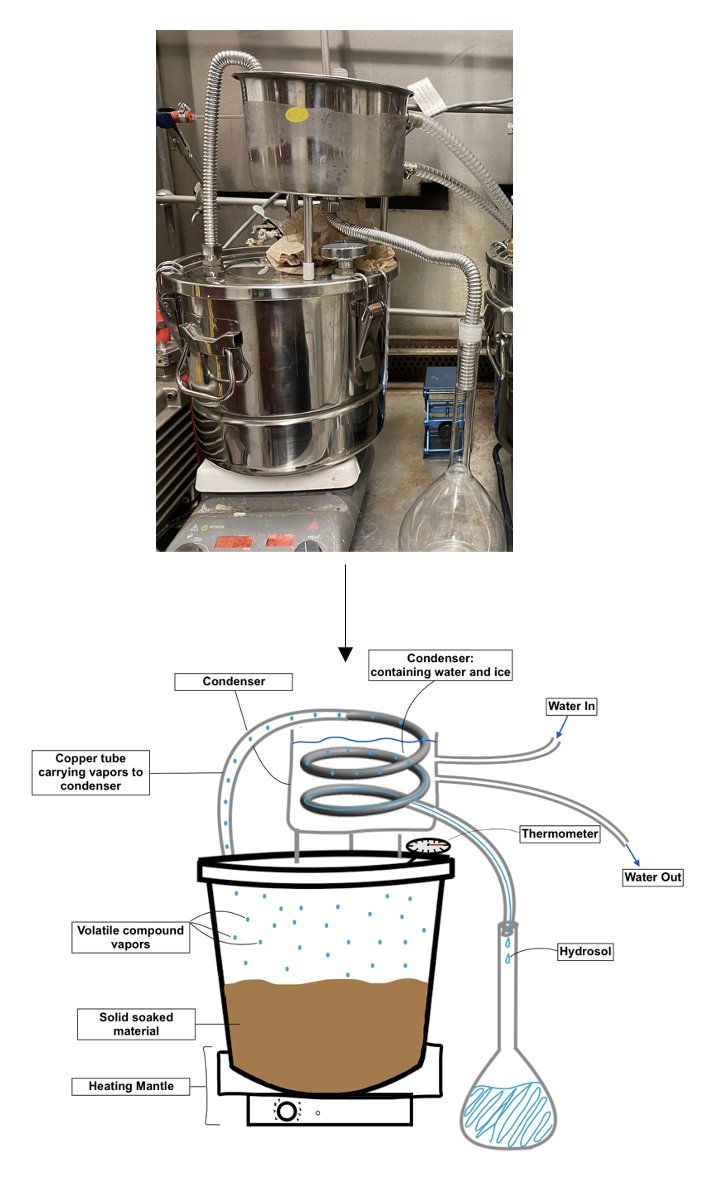
Solid Phase Extraction (SPE)
In order to inject the hydrosol samples into the GC, the water must first be removed. This is because water can disrupt and degrade the GC-MS column, ruining any data obtained. The hydrosol is run through SPE in order to analytes from the water they are dissolved in. This is done by loading the hydrosol into a cartridge containing a solid phase matrix. The matrix will absorb any analytes that the hydrosol contains, while the water will flow directly through the matrix, leaving the analytes behind. The water is discarded, and a vial is placed under the cartridge. An organic solvent is then used to elute the analytes from the matrix. For the specific preparation of black cardamom, a vacuum manifold was set up with a waste collector inside. 6 (C18) 3mL SPE cartridges were fitted into the vacuum manifold. Each cartridge was then conditioned with 1mL each of methanol and DI water. 1mL of the hydrosol was then run through each cartridge. An internal standard of 4-ethylguaiacol was added to each vial in the following concentrations 5µL, 10µL, 20µL, 50µL, 100µL, and 200µL respectively. This is to produce an internal calibration curve in order to be able to quantify the compounds within the hydrosol. The waste collector is then removed and replaced with 6 GC-MS vial. The hydrosol compounds are then eluted into these vials using 4 lots of 250µL of ACN:MeOH. The samples are now ready for GC-MS analysis.
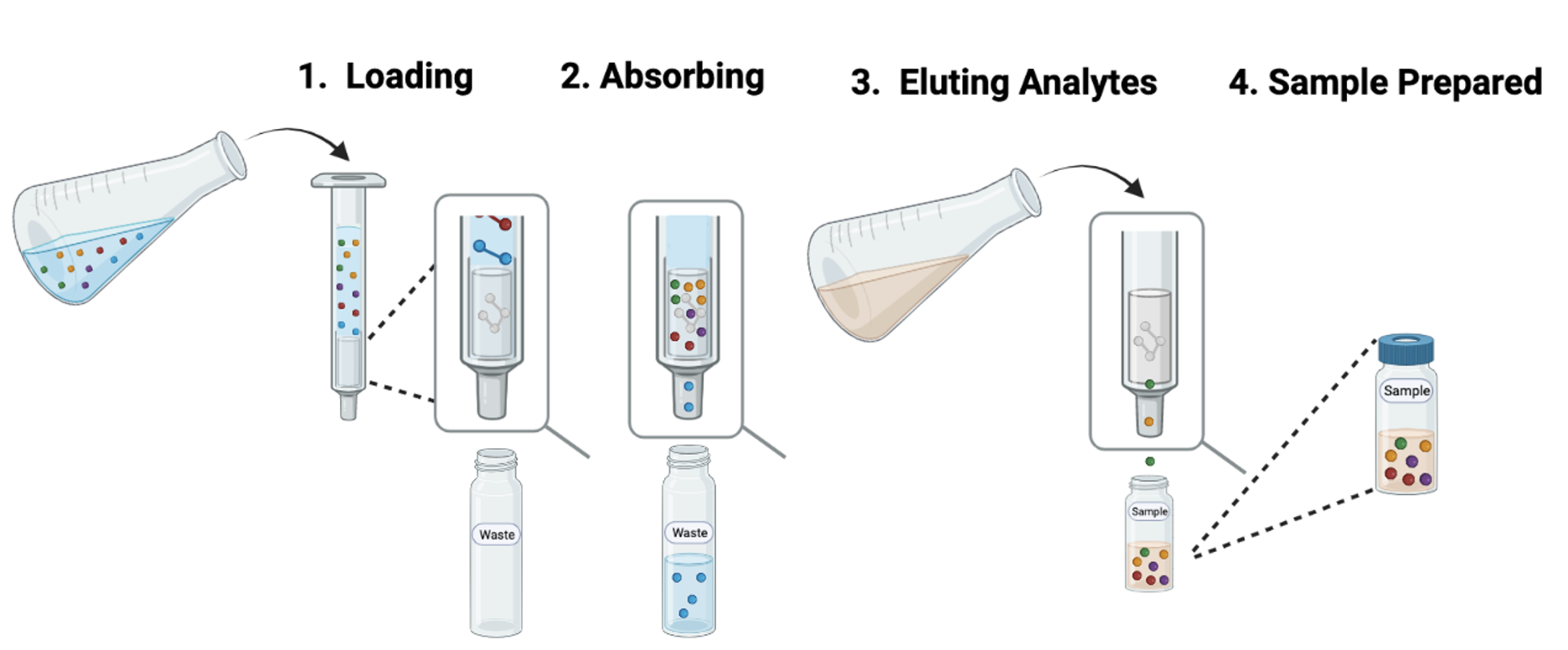
Microwave Distillation – Hydrosol Analysis
Three batches of black cardamom hydrosol were made by microwave distillation. Batch 1 and 3 were relatively similar, while batch 2 experienced significant variation. This may be due to the fact that in batch 2, during the final run in the microwave, the black cardamom powder burned due to a dry pocket that had formed. No oil was produced from the microwave distillation batches. In addition the black cardamom sludge still smelled very strongly, even after the 3 microwave distillation runs. This indicated that not all the volatile compounds were extracted using this distillation technique.

Hydro Distillation – Hydrosol Analysis
Three batches of hydrosol were also produce via the hydro distillation process. However, this time, a layer (1-3mL) of essential oil was produced from the process. The volatile compounds within the hydro distilled hydrosol were analyzed by comparison to the database provided by the Agilent software. Then their identities were confirmed by comparison of their experimentally calculated Kovats Index to the theoretical Kovats Index information found on the NIST (National Institute of Standards and Technology) datatbase.
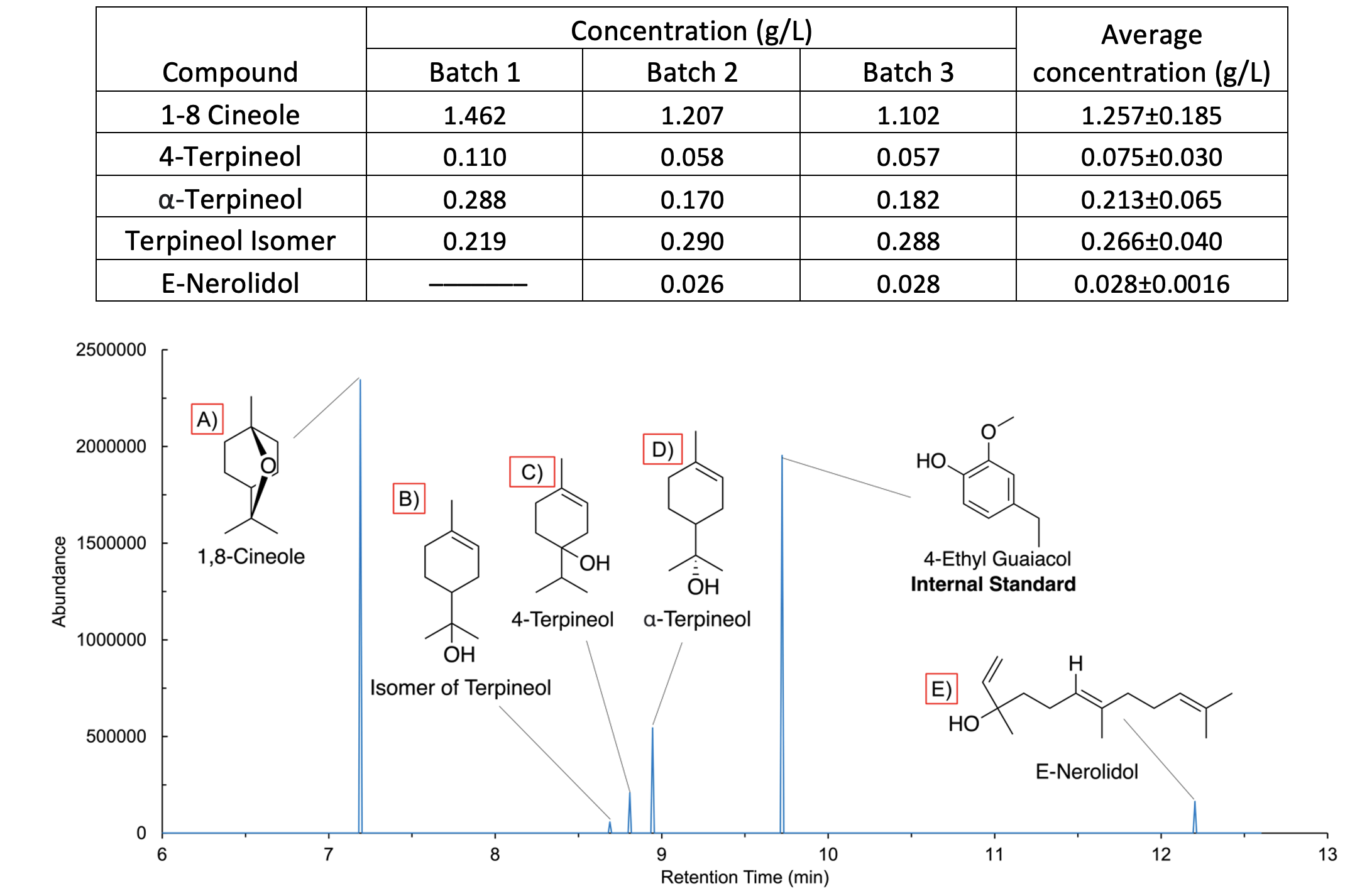
Emulsion Analysis
From the hydro distillation batches, a cloudy white layer of an emulsion as well as some oil was formed. This very small emulsion layer was extracted and run through the SPE then GC-MS. The emulsion was much more complex than the hydrosol analyzed, though it did contain some of the same compounds. In addition to this, most of the compounds found were at a very low concentration. The table outlines the results of the analysis, as well as the solubility in water of each chemical compound. The solubility of the compounds in water are important to note as almost all the compounds were poorly soluble in water, thus explaining why the chemical compounds seperated from the water but would disperse into the water immediately when slightly shaken. Lastly, the bolded compounds in the table were found in the emulsion as well as the hydrosol itself.
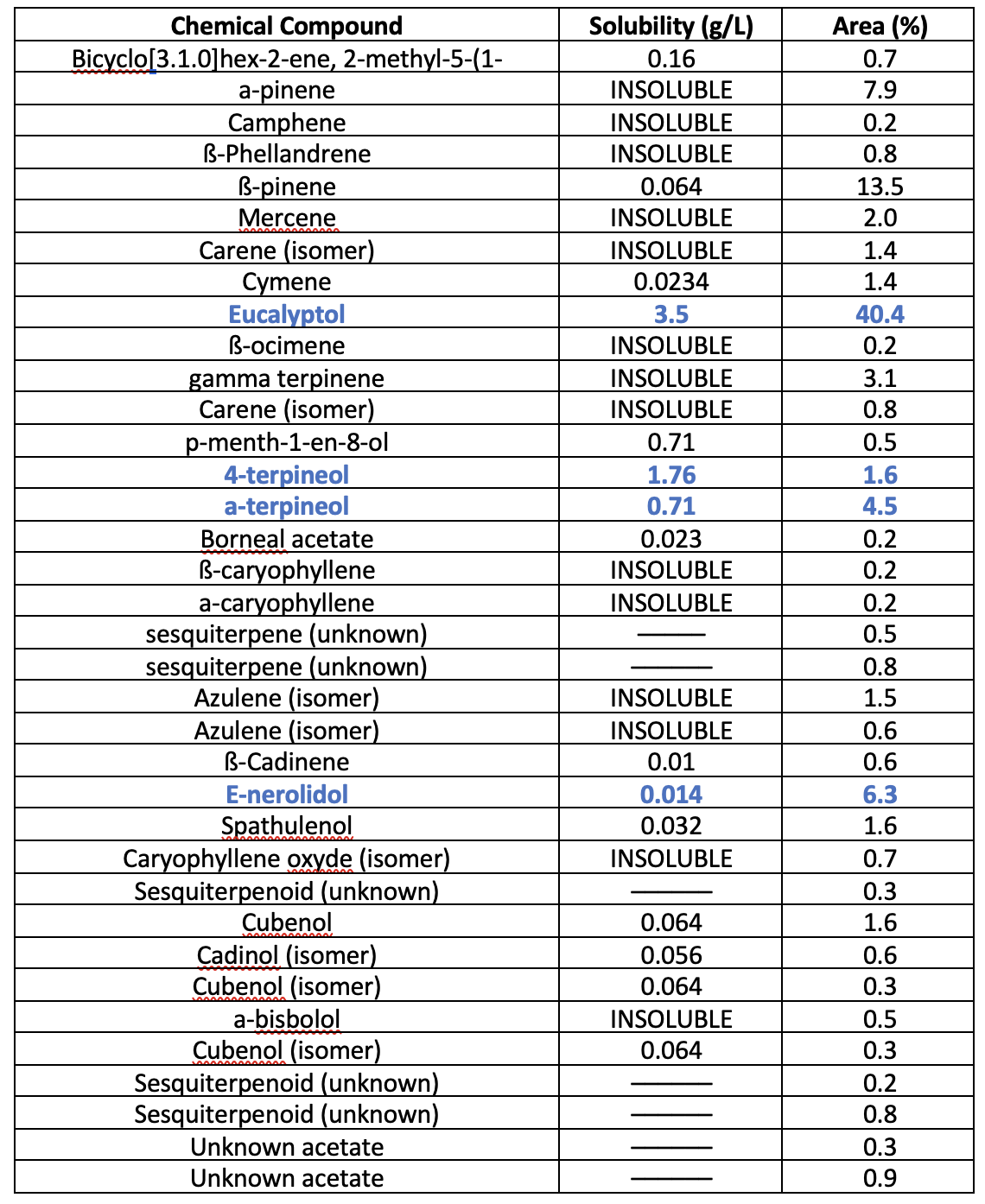
Essential oil analysis
The essential oil produced was analyzed as well. While more complex than the hydrosol, it was simpler than the emulsion that was produced, having half the amount of compounds. The top 10 compounds in both the oil and the emulsion were fairly similar (as shown in the table). The differences are likely due to the relative water solubility of the compounds.
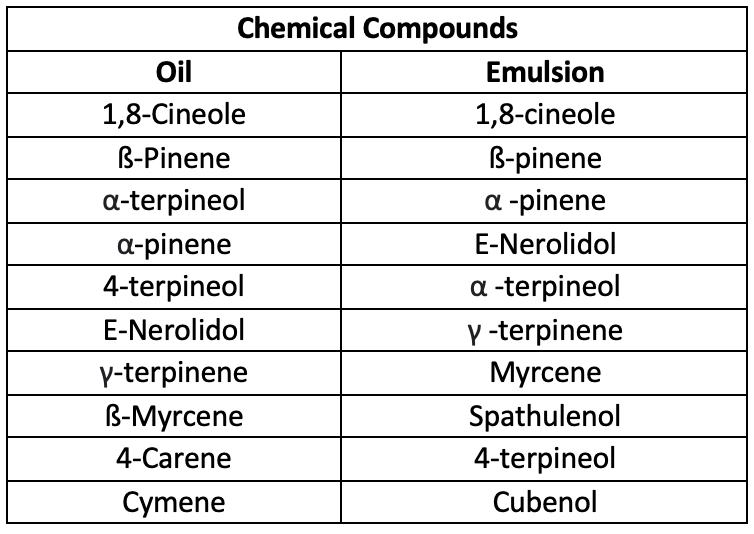
Conclusion
The main chemical compounds found in the black cardamom hydrosol, from both the microwave and the hydro distillation methods were 1,8-cineole, 4-terpineol, and alpha-terpineol. Furthermore, the the hydro distillation method proved to be significant as this method was able to produce black cardamom essential oil and an emulsion of chemical compounds.
